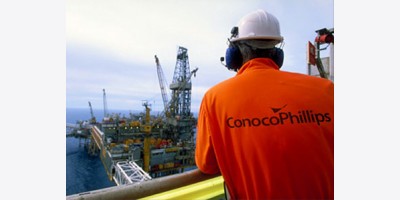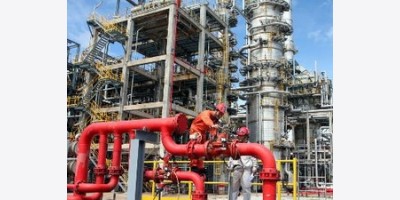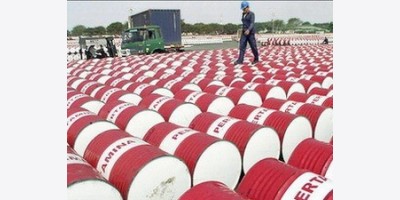The June OPEC meeting should not bring too many surprises, as the cartel’s unofficial leader, Saudi Arabia, will not support production cuts in order to boost falling prices, but will instead focus on preserving its global market share.
OPEC’s presumption that low oil prices will decimate expensive US unconventional production (and thus solve the oversupply issue) proved to be only partially accurate, as shale oil producers have still managed to sustain high production rates in the seven core areas of unconventional production that account for 95% of US oil production growth.
But even with the current fall in unconventional production, the EIA forecasts that overall US oil production will continue to rise in the next two years.

It seems that OPEC is prepared to acknowledge this fact and prepare for a long struggle with its competitors. OPEC’s long-term strategy draft report, to be published in June, also forecasts a two-year rise in non-OPEC oil production noting, “for non-OPEC fields already in production, even a severe low price environment will not result in production cuts, since high-cost producers will always seek to cover a part of their operating costs.”
We are thus currently seeing the end of the beginning of the oil war that started last November, as well as a continuation of market volatility that might bring more surprises in both the political and economic fields.
It will be interesting to see how different OPEC members will react to the potential of a prolonged period of low oil prices. It is a known fact that, despite common interest in preserving its dominant position in global energy markets, OPEC is composed of different countries with different political and economic goals which do not always converge.
Saudi Arabia and the cash-rich Gulf States will no doubt be in favour of sustaining high production levels, regardless of its impact on global oil prices.

Less fortunate ones, which account for the majority of the Cartel’s members, will most certainly have objections, since they have struggled to meet the high domestic economic and political expectations created during the previous decade of high oil prices.
At the moment, OPEC operates under the output quota system, which only sets the total maximum output for all member countries, since the individual quotas system was quietly abandoned in 2008. The cartel’s quota is currently set at 30 million barrels per day (mbd), but the actual total production hovers around 31 mbd.
However, in the low-price environment, the quota framework might easily lead to its breakup, as individual countries will be tempted to substitute the fall in revenue with higher output. Iran is already preparing to boost its crude export levels should the international community lift the sanctions in June, and other non-OPEC producers, including Russia, have no intention of reducing their levels of production.
Accordingly, OPEC has few options. The continuation of the high production policy in the current unfavourable supply and demand environment will inevitably lead to a severe oil glut and a further slump in oil prices, without there being any guarantees that this will either preserve the cartel’s global market share or curb the competition.
On the other hand, production cuts might raise prices, at the same time helping to sustain and additionally boost US shale output and potentially break the organisation’s integrity on which its influence was built.
Which brings us to the issue of OPEC and Saudi Arabia’s ability to retain the swing producer role and exacerbate its power to set global crude prices. According to a Goldman Sachs report produced last October, this position is already taken over by the US shale producers “as the cartel no longer has the ability to push prices lower than the production costs of US shale, because any cuts from OPEC would accommodate the further expansion of US shale and reduce OPEC members’ profits.”

In the short-term, oil markets could experience strong volatility and price swings in both directions — potentially in the range of $45 to $80 per barrel.
In the long-term, some sort of equilibrium will have to be established, but it is unlikely that the period of OPEC’s supremacy or over $100 crude prices will return any time soon.
Read the original article on Global Risk Insights. Copyright 2015. Follow Global Risk Insights on Twitter.























